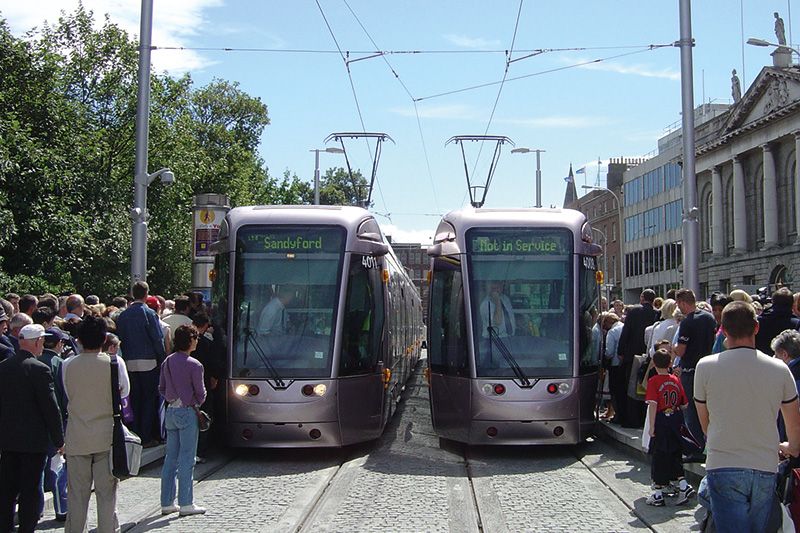Luas at 20: What the UK can learn from Dublin’s Light Rail success
The UK Light Rail Conference 2024 kicks off today (17th July) in Leeds.

The UK Light Rail Conference 2024 kicks off today (17th July) in Leeds. This year is the twentieth anniversary of the opening of the first line of Luas, Dublin’s light rail system. The success of Luas has surpassed all expectations. What lessons can we in the UK can learn from Dublin? To answer this, we first need a little historical context.
The Green Line, which linked Sandyford in Dublin’s southern suburbs to St. Stephen’s Green in the heart of the city centre, opened on 30th June, 2004. The second line – the Red Line – opened a few months later, on 28th September 2004. Further extensions followed, and now Luas (the Irish for ‘speed’) covers 42 km and has 67 stops. This year and for the first time, Luas is on track to carry over 50 million passengers.
While state bodies and civic society had been making the case for light rail in Dublin for a number of years, its policy foundation was the recommendations of the Dublin Transportation Initiative (DTI), a multi-modal land use transportation study that brought together Government (Transport, Environment and Finance), local authorities in the Dublin city region and transport agencies. As well as technical analysis, stakeholder and public engagement were integral to the development of the study’s recommendations. Led by Steer, the DTI reported in 1994, and a year later, its recommendations were adopted by the Irish Government.
It took just ten years to move from the recommendation for light rail to be part of the overall strategy to the opening of Luas’s Green and Red lines. Compromises were made along the way. The original recommendation was for a three-line network, but two were built. And to start with, the Green Line stopped south of the Liffey, with the extension north of the river not opening until 2017. Nonetheless, before that, the success of the first two lines helped make the case for extensions at the eastern and western ends of the Red Line and south from the original southern terminus of the Green Line. And these happened despite the significant impact on the Irish economy of the Great Recession of the late 2000s.
Dublin managed to take a light proposal from plan to opening at a faster rate than we are able to do in the UK. What lessons does Luas teach us about implementing not just light rail, but also other complex capital-intensive projects:
- The plan for Luas was set within the context of an integrated land use transport strategy, which had institutional, stakeholder and public support
- There was a dedicated and appropriately resourced promoting agency
- The Irish Government created a supportive legislative framework
- There was flexibility to respond to changing circumstances, while at the same time maintaining a strategic vision
- There was political commitment from the Cabinet, members of the Irish parliament (TDs) and local elected members
To find out more about how Steer can help you with transport and infrastructure projects, please contact Neil Chadwick.
To dive deeper into the challenges and opportunities in the transport sector under the new UK government, join us for our series of engaging live online events, starting on July 24th.
Highlights include 'Buses in 30: The Future of fares, funding & franchising' on August 1st, where Neil will discuss the latest developments in bus services with Simon Warburton, Executive Director of Transport for West Yorkshire Combined Authority.




